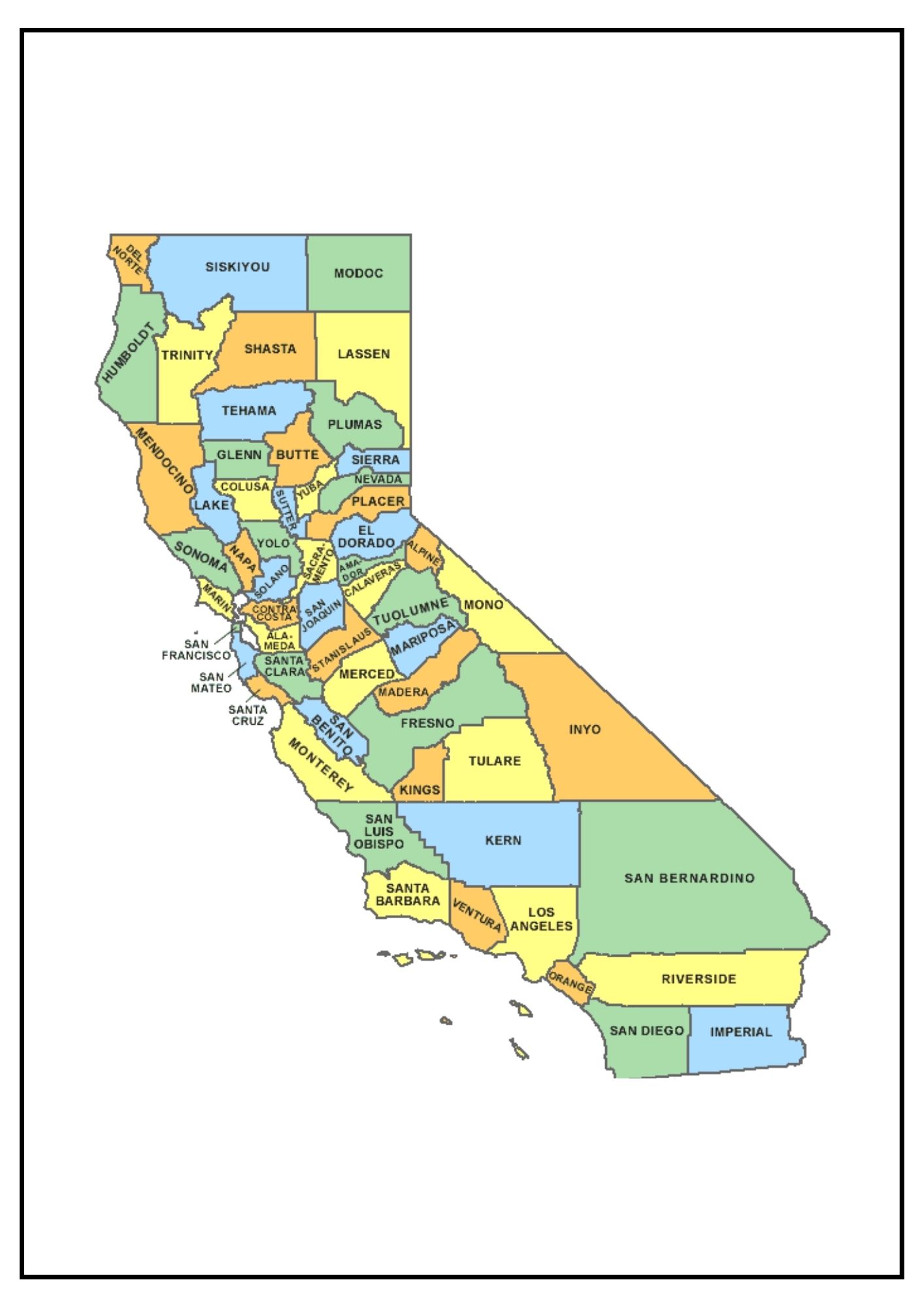How Many Counties in CA? Detailed Map, History, and Key Data
How Many Counties in CA? Detailed Map, History, and Key Data
Blog Article

Curious to know what the exact county count in California is? You’re certainly not the only one. Be it for research, a road-trip map, or pub-quiz glory, the number 58 keeps popping up, butthat short answeronly tells half the story.
California’s counties forma tapestry of extremes: surf-washed beach cities, snow-capped alpine districts, vast agricultural heartlands, and thriving tech metropolises. Each county carries its own story, moulded byrailroad expansion, cutting-edge innovation, and ever-changing demographics.
Throughout this guide, we’ll dig into why California ended up with 58 counties, the real responsibilities counties shoulder, and the outliers that set fascinating records. When we’re done, you’ll know the facts—and sound like a local expert with confidence.
Origins of California’s 58 Counties
On statehood day in 1850, the map contained barely half the jurisdictions we know now. Rapid gold-rush immigration forced lawmakers to redraw borders. By the end of the 1870s, the count had risen to 53 counties, and that same year the remaining gaps were closed, cementing the official total of fifty-eight.
Assembly journals reveal that fresh jurisdictions sprang out of three overlapping forces:
- Geographic isolation left settlers days from the nearest courthouse.
- Tax disputes between miners and farmers ignited partition drives.
- Language and immigrant communities wanted self-rule.
By 1920, the political map stabilised. Right now, every effort to create county #59 stalls, causing commentators to dub the era of county making truly closed.
From Kelp Forests to High Deserts: County Geography
Stretch a string from the Smith River watershed to border-side Calexico, and you’ll cross dozens of ecosystems. Coastal counties enjoy Mediterranean precipitation, while basin counties in the Central Valley battle drought cycles.
- Alpine districts such as Placer, Nevada, and Alpine receive winter snows.
- Sacramento–San Joaquin fringe counties mix levee farms with wetlands.
- Island counties like Ventura oversee ferry routes.
Such variety explains how water rights, zoning, and ag yields diverge so sharply. Topography dictates everything from wage levels to weekend hobbies.
Behind the Scenes at the County Level
Amid Sacramento’s delegated framework, municipalities handle zoning, but counties shoulder the bread-and-butter functions that keep daily life humming. From birth to death—vital records, coroner reports, property deeds—all reside at the registrar of voters.
Elected sheriffs patrol vast rural stretches, while trial courts hear civil suits. Public-health branches distribute food assistance. Funding debates fill chamber galleries with activists.
Example: Contra Costa’s Shared Services Model
Contra Costa partners with nearby cities for animal control, illustrating how elastic the system is. One template doesn’t fit all when budgets span five figures to double-digit billions.
Ultimately, county halls act as middle managers between Capitol and curbside. Knowing their role empowers voters.
Where the People and Money Are
California houses over thirty-nine million people, but those citizens collects in dramatic clumps. LA County by itself hosts more than one resident in four. Conversely, high-elevation Alpine rarely tops 1 200 inhabitants.
- Most populous: Los Angeles
- Fewest people: County of Alpine
- Widest landmass: San Bernardino
- Tightest borders: City & County of SF
Fiscal bandwidth mirrors population spread. Tech-centric jurisdictions boast per-capita GDP rivaling small nations, while interior ag counties face commodity price swings. Such economic polarity informs legislative redistricting every decade.
Tracking each superlativemakes relocation plans simpler: tax rates, job prospects, and lifestyle perks hinge on county lines.
The Ultimate California County Circuit
Adventure-hungry drivers, bagging all 58 jurisdictions is the new bucket-list quest. A popular itinerary begins in San Diego, heads north along Highway 1, swings through Santa Cruz, then threads through rice-field flats and orchard grids, before ascending into how many counties in california the Sierra Nevada for historic gold-rush hamlets.
Three-Day County Clusters
- Southern Swing – Mission trail coast; ten jurisdictions in a long weekend of days.
- Valley Ribbon – Ventura to Sacramento; eight hours of orchards.
- Shasta & Siskiyou Turn – evergreen corridors; jaw-dropping vistas.
Close the circuit in Imperial, after two thousand kilometres of asphalt. At that point, you can brag that you’ve lived the answer to the county-count question—because your copyright stamps prove it!
Frequently Asked Questions
Below you’ll find concise answers to the most common county-related queries.
How many counties does California have?
Government documents list 58 counties—a total locked in for over a century. Check any authoritative source, and you’ll find the same figure: 58.
Where do the most Californians live?
Los Angeles County tops the list, hosting a population greater than that of many U.S. states. Its size stems from historic migration waves, a diverse economy, and global cultural pull.
Least populous California county?
The crown for smallest population goes to Alpine County, with fewer than 1 200 inhabitants. Location along rugged mountain corridors naturally restricts settlement, preserving a frontier feel.
What is California’s biggest county geographically?
Geographic titan San Bernardino County encompassing deserts, mountains, and metro suburbs alike. From Joshua trees to ski lifts, few regions illustrate California’s contrasts so vividly.
Why does California have exactly 58 counties?
Gold-rush politics, rail expansion, and farmland disputes carved today’s boundaries, with the final adjustments ratified in 1907. Every modern effort to create a new county stalls in committee or dies at the ballot box.
Could a region break away to become its own county today?
On paper, state statutes permit county formation, yet practical barriers loom large. Financial viability studies plus state-level sign-off deter most would-be county creators. That’s why no county lines have moved since the early 1900s.
Why are counties important to everyday life?
Counties handle the backbone of local governance: voter registration, deed recording, health clinics, and sheriff patrols. Remove counties from the equation, and civil society would struggle to operate.
Report this page